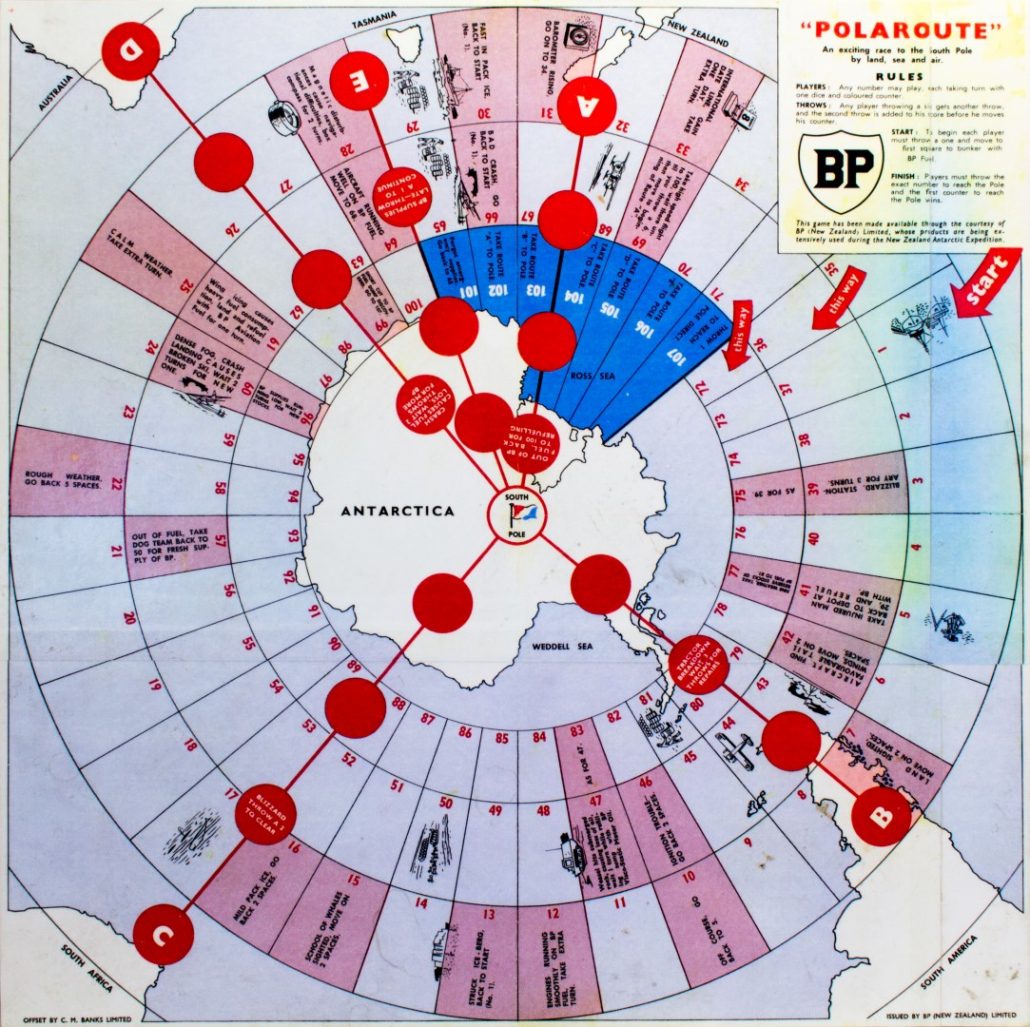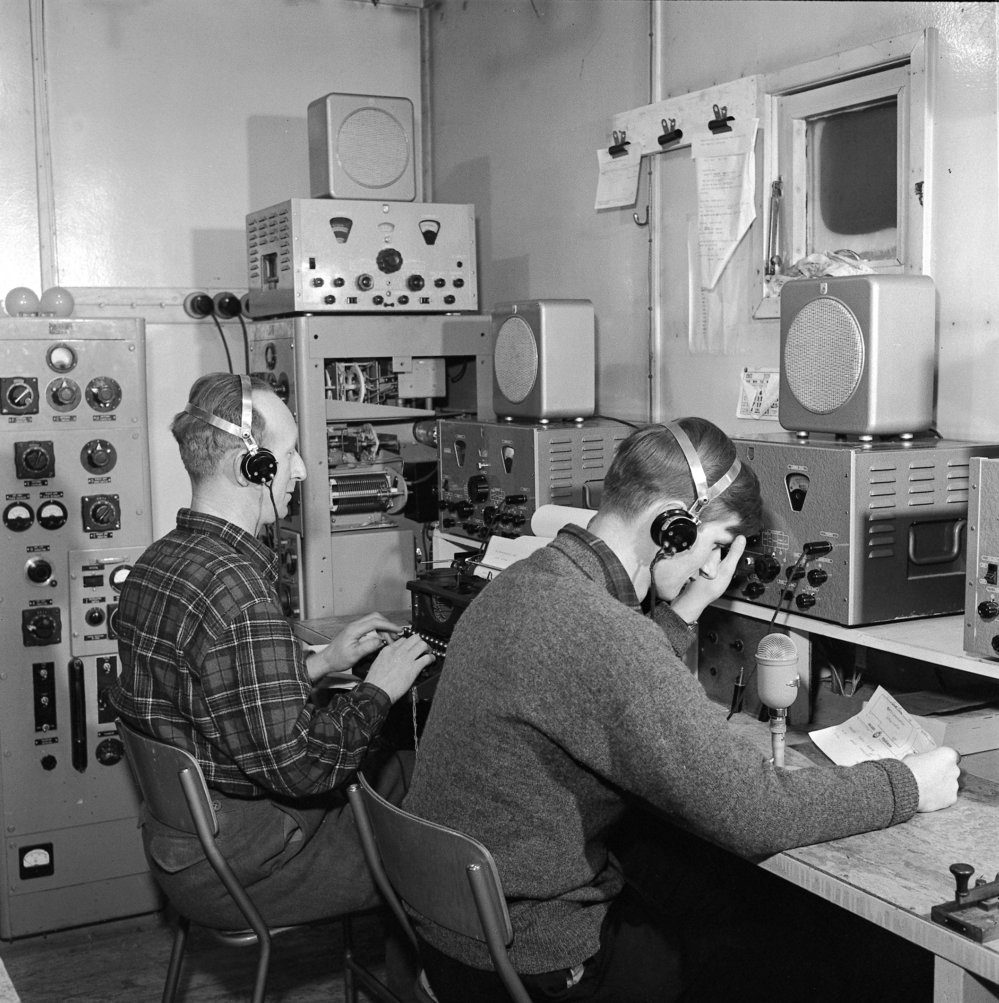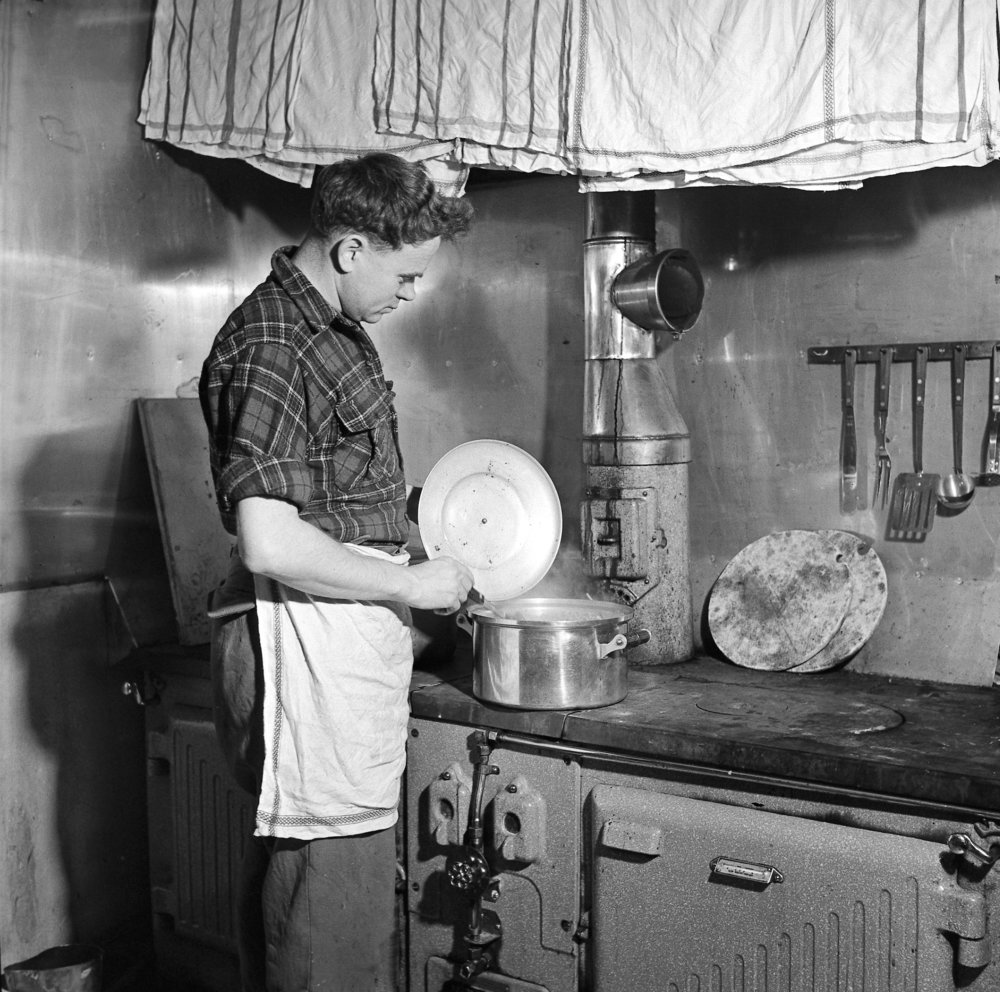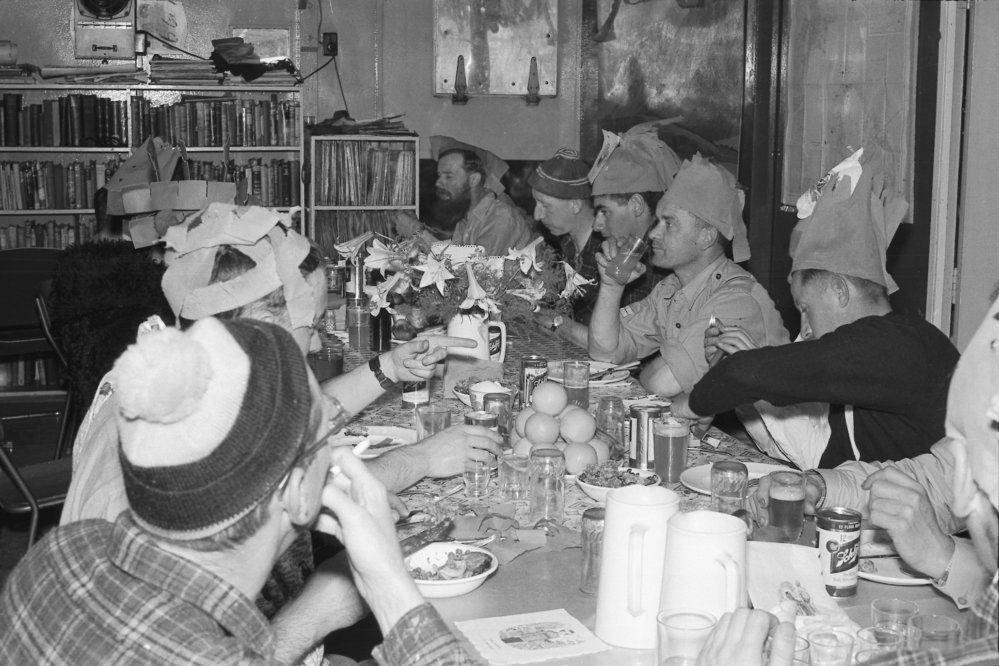Life at Scott Base
After the summer support crew left in February 1957, there was still work to do finishing off the base and building a large garage alongside it. Geologist Guy Warren helped with its construction and learned that Antarctica brought particular challenges.
“Gradually taught myself the hard way that holding nails in your mouth is not the thing to do below zero, and several little raw patches on the tongue and lips prove the truth of it.” (Hillary’s Antarctica, P.66)
It was a tight fit housing 23 explorers and scientist in the hut, so it had to be well-organised.
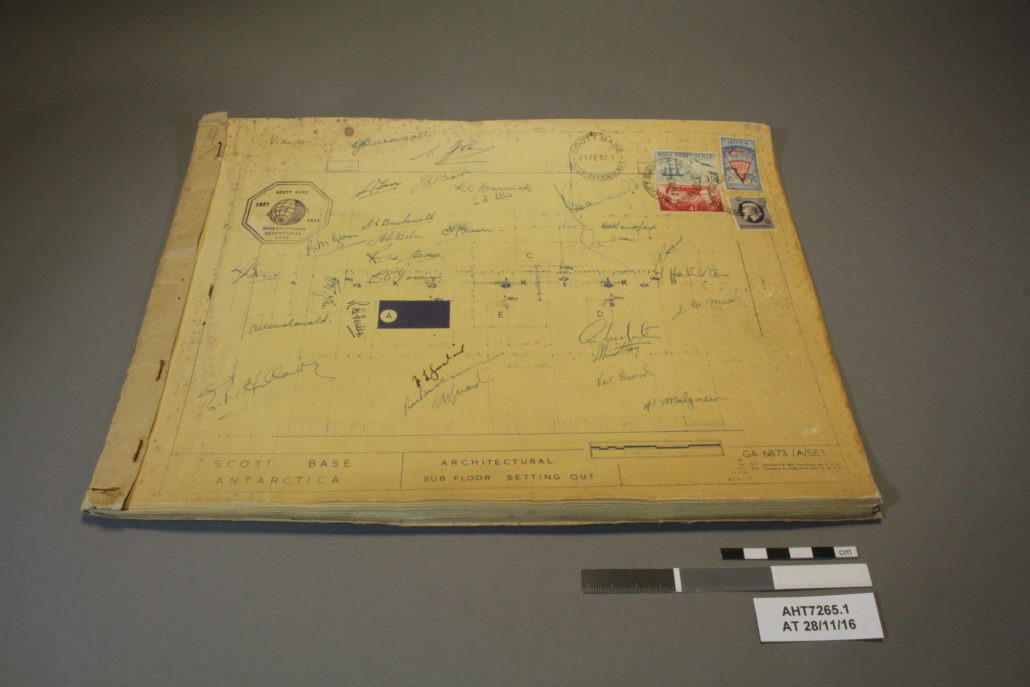
Hillary’s Hut floor plans.
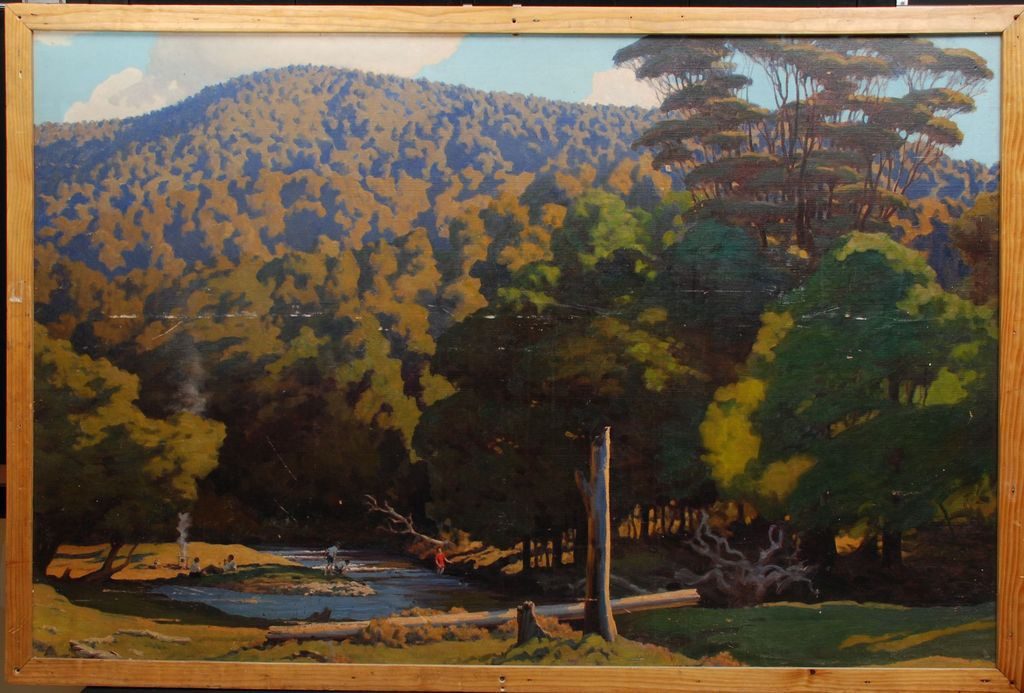
Large painting by Marcus King of a typical Canterbury high country scene.
Life inside the hut
The hut had a 1950s Kiwi feel to it – the mess room was the focal point of base life. It had linoleum on the floor, tubular steel Formica-topped tables and chairs, and a large painting by Marcus King of a typical Canterbury high country scene of a musterer with his horse and dogs bringing down his flock of sheep. Portraits of Queen Elizabeth II and a signed photograph of Captain Robert Falcon Scott also decorated the walls.
For relaxation
There was a library of around 1,000 books, and 500 vinyl records and player. The Black Hills of Dakota by Doris Day was one favourite. Another was Julie Andrews’ Getting to Know You. Ed got so sick of hearing it that he broke the record! The men also played chess and other games, and there were weekly talks, when they each spoke about something of personal interest.
On Saturday nights and on special occasions they’d have drinks – there was no shortage of choice: beer, rum, whisky, brandy, gin and on Sundays – which were cook Selwyn Bucknell’s nights off and two of the other men would take over – a small bottle of wine each ‘to deaden the shock of the amateur cooking’. (Hillary’s Antarctica, P.75)
‘Moose’s milk’
Sometimes the men would experiment making cocktails, one of which was known as ‘Moose’s milk’. There was a generous supply of condensed milk available and it became the base of this concoction:
equal parts of rum, boiling water and condensed milk mixed in a beer glass. “For those wanting to ward off scurvy, a dash of rosehip syrup was optional.” (Hillary’s Antarctica, P.75)
A matter of faith
A service was held at midday on Sundays, including readings and singing. These were well-attended initially but over time numbers dwindled until only four of the men went regularly.
Keeping connected, on the Ice and with home
During the winter months there were no ships or aircraft operating so it wasn’t possible to get or send mail, which meant that the radio was the only means of communication. Transmission was very expensive so the men were rationed to only one call home a week. Much looked forward to, these could be frustrating because of atmospheric interruption making the calls full of noisy static and delays.
The radio room housed surplus World War II equipment, operated on two 350-watt HF transmitters.
No luxury for the boss
Sir Ed’s office was directly off the mess room. It was supposed to be furnished with a desk and filing cabinet but these had to make way for a bunk. Late in the day, Hillary had chosen to add dog handler Murray Douglas to the field party, and the only space available on base for an extra bunk was in Hillary’s office. There were two bunk rooms in another building for the rest of the party.
The importance of the kitchen
Cook Selwyn Bucknell provided three hot meals a day, as well as morning and afternoon tea and supper, six days a week. His day off was Sunday so, on that day, in pairs, the men took it in turns to cook. This became quite competitive.
The size of the kitchen was generous. To make sure there was always a supply of fresh water, it contained a large snowmelter. Large blocks of hard snow had to be shovelled into it, a job that had to be done more than once a day.
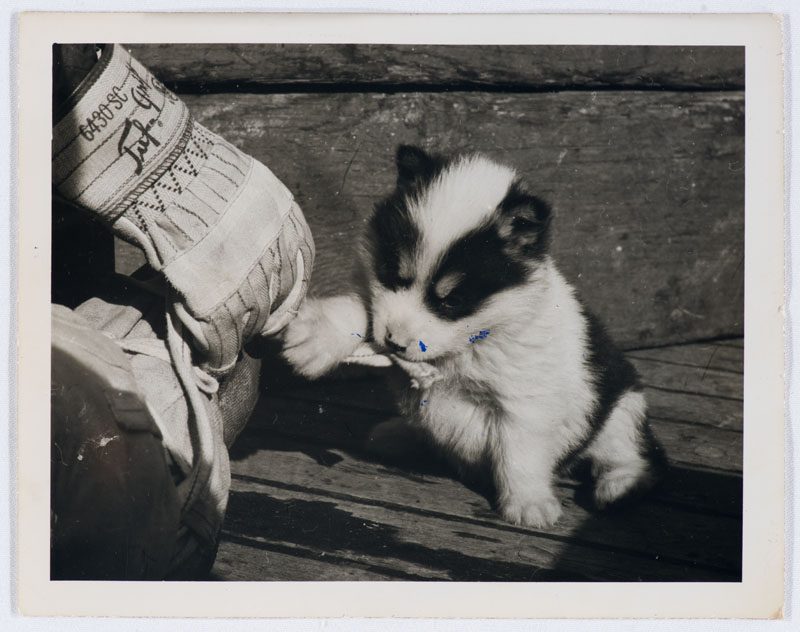
Husky pup.
Unexpected treat
The expedition deputy leader, surveyor Bob Miller, became something of a champion at making ice cream, which became a regular Sunday treat. He would put it outside the hut to freeze. But one particular Sunday he discovered it had all disappeared. In the dim polar light he found some clues as to the culprits – many sets of footprints revealed that the husky pups had discovered this unexpected treat and wolfed the lot. Miller was not pleased.
Extra special effort
In the spirit of Antarctic tradition, Selwyn Bucknell produced something really special for mid-Winter celebrations. When you see the kitchen in Hillary’s Hut, imagine producing this!
Cocktails were served at 6pm and the meal was started at 7pm: “… served by George [Marsh] and Trevor [Hatherton] in white jackets … Some of the more dedicated revellers continued partying in the sledge room, then took to singing … they did the rounds and kept people awake ‘till 6am.” (Hillary’s Antarctica, P.84)


